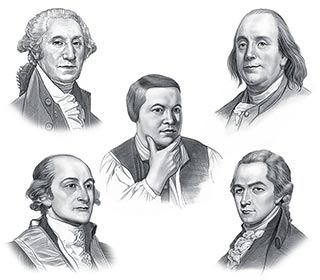The lush forests provided wood for various trade items, iron ore was used as a basis for trade using this material. Trade in the Colonies was made possible by the their surplus of raw materials. Refer to Colonial Timesfor full descriptions of each of the trades and industries of Colonial America.
Trade in the Colonies of New England
The Colonies of New England consisted of New Hampshire, Massachusetts, Rhode Island and Connecticut. The geography of New England consisted of mountains thick with trees, rivers and poor rocky soil that was difficult to farm and unsuitable for crops. The natural resources available for trade in the colonies of New England included fish, whales and forests. Items used for trade in the New England colonies Fish, whale products, ships, timber products, furs, maple syrup, copper, livestock products, horses, rum, whiskey and beer.
Trade in the Middle Colonies
The Middle Colonies consisted of Pennsylvania, Delaware, New York, and New Jersey. The geography of the Middle Colonies had a mix of the New England and Southern features but had fertile soil and land that was suited to farming. The Middle Colonies had a mild climate with warm summers and mild winters. The natural resources available for trade in the Middle Colonies included good farmland, timber, furs and coal. Iron ore was a particularly important natural resource. The Middle Colonies were the big food producing region that included corn and wheat and livestock including beef and pork. Other industries included the production of iron ore, lumber, coal, textiles, furs and shipbuilding.
Trade in the Southern Colonies
The Southern Colonies consisted of Maryland, Virginia, North Carolina, South Carolina and Georgia. The geography of the Southern Colonies featured fertile soil, hilly coastal plains, forests, long rivers and swamp areas. The natural resources available for trade in the Southern Colonies included Fish, forests (timber) and good agricultural land, farming on plantations was important. Items used for trade in the Southern Colonies colonies included Tobacco, cotton, rice, indigo (dye), lumber, furs, farm products many of which were produced on the Slave Plantations.
Trade in the Colonies - Triangular Trade
Triangular trade is a term that describes Atlantic trade routes between three different countries. Raw materials and natural resources found in the 13 colonies were traded for manufactured products (finished goods) from England. The triangular trade route included Africa where slaves were treated as human commodities.
Trade in the Colonies - Mercantilism
Mercantilism was based on the benefits of profitable trading. England adopted trade policies that favored the flow of wealth from the colonies to the mother country (England). The policy of Mercantilism favored England because the raw materials from the colonies were used to make different products in England - finished goods have a higher value than raw materials. Also refer to Colonialism.
